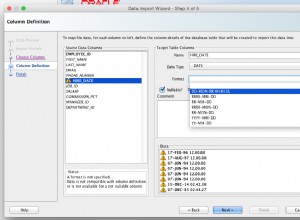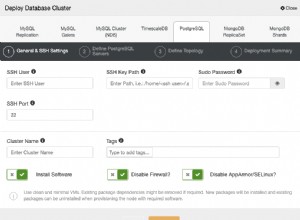Możesz użyć sumy bieżącej w zapytaniu podrzędnym, aby pomóc w tym w wersjach wcześniejszych niż mysql 8.0
drop table if exists t;
create table t
(id int,A int,B int);
insert into t values
(1, 1 ,0),
(2, 0 ,1),
(3, 1 ,0),
(4, 1 ,0),
(5, 1 ,0),
(6, 1 ,1),
(7, 1 ,0),
(8, 1 ,1),
(9, 1 ,1),
(10, 1 ,0),
(11, 1 ,1),
(12, 1 ,0),
(13, 1 ,1),
(14, 1 ,1),
(15, 1 ,1),
(16, 0 ,1);
select t1.id,t1.a,t1.b
from
(
select t.*,
if(t.a = 1, @rt:[email protected]+1,@rt:=0) rt
from t
cross join (select @rt:=0) r
order by t.id
) t1
where t1.rt >= 10;
+------+------+------+
| id | a | b |
+------+------+------+
| 12 | 1 | 0 |
| 13 | 1 | 1 |
| 14 | 1 | 1 |
| 15 | 1 | 1 |
+------+------+------+
4 rows in set (0.00 sec)




